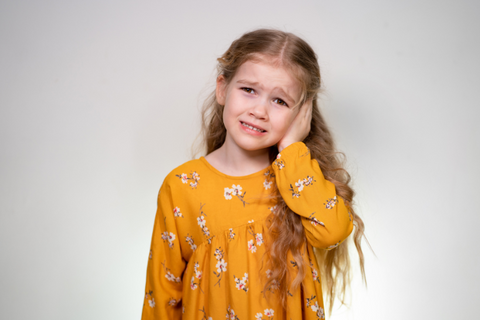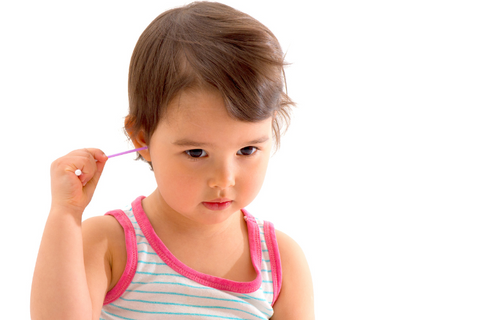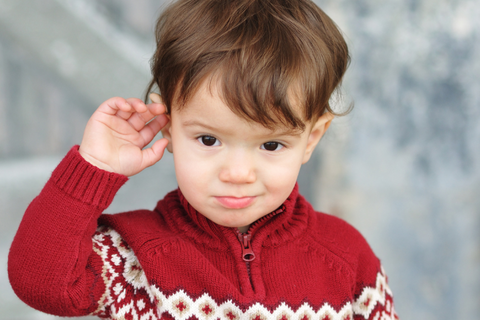Guest Post by Katy Fleming, MA, LPC, BSN, RN
Whether you’re an adult or a child, there’s a good chance that you’ve put something in your ears that doesn’t belong there.
From cotton swabs to our fingernails, we often try home remedies to clean or itch our inner ears. Many of these makeshift solutions end up causing more damage.
Let’s talk about common items that you shouldn’t use in your ears at home and the potential risks to your health.

5 Things to Never Put in Your Ears
Protect yourself by avoiding putting these 5 things in your ears:
1. Cotton Swabs
Despite the popular brand, Q-Tip, warning consumers to keep their cotton swabs out of their ear canal, many people continue to do so.
Why does it matter?
Sticking these thin cotton swabs into your inner ear canal causes the earwax to push deeper into the canal. You can make your problem even worse.
Earwax has an important role in killing germs and protecting your inner ear. Although it may seem dirty, it’s a natural substance with a purpose.
Most individuals don’t need to clean their ears at all. Earwax naturally finds its way to the outer ear canal. It either falls out by itself or washes away in the shower.
For those who struggle with excessive earwax, the American Academy of Otolaryngology recommends speaking with your doctor about earwax removal and prevention.
It’s certainly tempting to pull out the Q-Tips as soon as we feel earwax but remember that you may cause more damage.

2. Hydrogen Peroxide
Hydrogen peroxide is a common ingredient in many ear drops, which typically contains 3% hydrogen peroxide to soften ear buildup.
Before you grab a bottle, Dr. Steven Goudy, a top pediatric ENT and inventor of the NozeBot, urges you to consider the risks of using too much hydrogen peroxide in his TikTok video.
Dr. Goudy explains, “It can disturb the balance of the bacteria in your ear canal and can cause irritation to the skin.”
High concentrations of hydrogen peroxide in the ear may lead to skin irritation, pain, or itchiness.
For anyone with a perforated eardrum, or a hole in their ear, never use hydrogen peroxide as this may lead to hearing loss.
3. Ear Candles
Deemed dangerous by experts, ear candling kits are marketed to draw toxins out of the ear, provide relief from sinus infections, and soften wax.
Ear candling involves lighting a flame at one end of a hollow beeswax or paraffin-soaked tube that is inserted into your ear.
The heat is intended to draw out earwax and bacteria from the inner ear.
The FDA warns to never use ear candles due to the risk of burns, blocking the ear canal, and perforating the eardrums.
Ear candle kits are highly dangerous for both adults and children. Even more damage can occur with children due to a higher risk of injuries and complications.
4. Sharp Objects
As you may suspect, sharp objects can cause serious damage to your ears. Bobby pins, pencils, paper clips, and other small objects should never enter your ear canal.
Some may try to remove wax buildup with these items, but similar to cotton swabs, they push the wax further into your ear canal.
Sharp objects may also damage your ear drum and lead to permanent hearing loss.
5. Fingers
Many toddlers stick their fingers in their ears out of curiosity whereas adults may have an itch. Seemingly harmless, but your fingers can cause some serious problems.
Your fingernails are covered in bacteria potentially leading to an infection when inserted into your ears. This pushes unwanted wax even further into your ear canal, as well.
Digging around in your ears may lead to cuts and skin irritation. Finally, sticking fingers into your ear canal may cause serious damage to your eardrum and hearing.

Looking for more on the ears, nose, and throat? Check these out:
- Chronic Congestion vs. A Stuffy Nose: What Parents and Caregivers Need to Know
- 5 Things Parents Need to Know about Strep Throat
- What Parents Need to Know about Invasive Sinus Infections
- Long-Term Impacts of RSV That Parents Need to Know
- Can I Use a Nasal Aspirator in the Ear?
If you’re experiencing any symptoms such as itchiness, pain, pressure, odor, or fullness of the ears, contact your primary care physician.
As a licensed counselor and registered nurse, Katy approaches freelance writing with years of experience and a unique perspective. Alongside her partner, Katy loves to travel the world and embrace other cultures from volcanoes in Iceland to villages in India.
The Nozebot is a battery-powered suction device designed to clear nasal congestion in babies and children.



